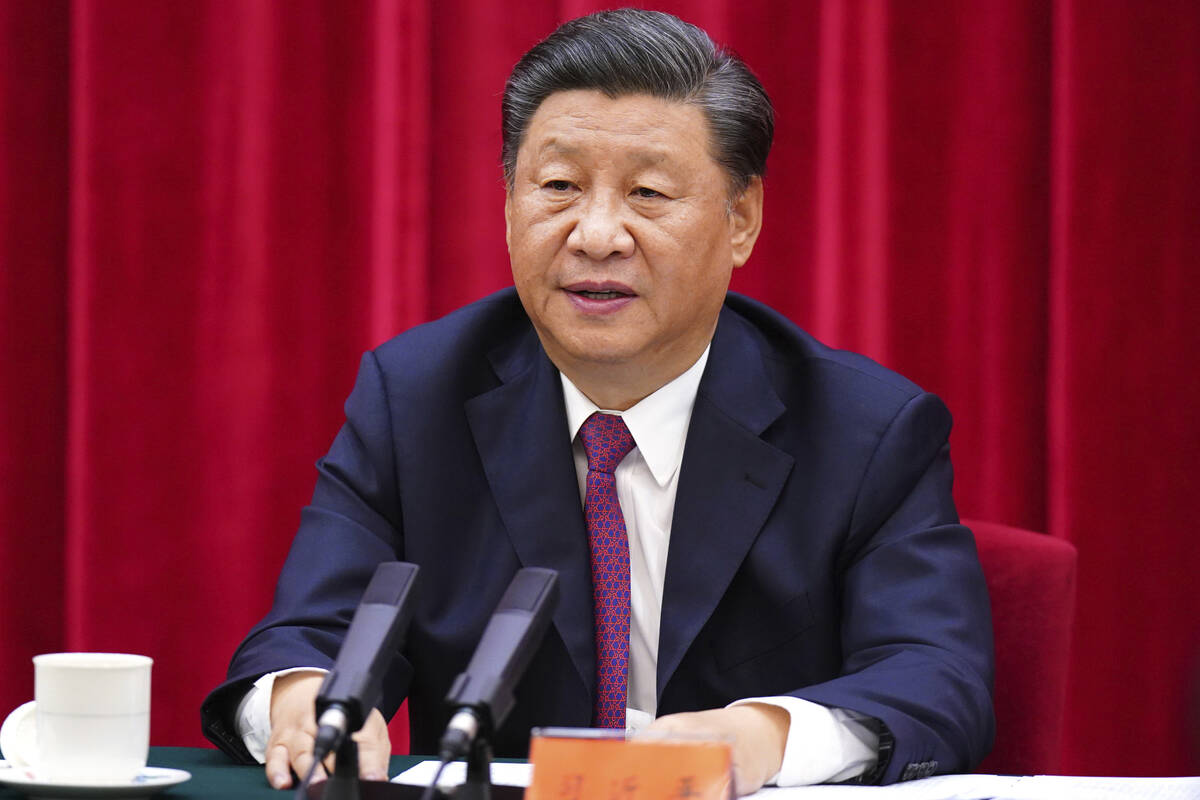RICH LOWRY: The on-again, off-again trade war
Never mind. President Donald Trump’s 145 percent tariffs on China ran smack into Stein’s law, the late economist Herb Stein’s famous axiom that “if something cannot go on forever, it will stop.” What was effectively an instant embargo on the biggest importer into the United States wasn’t sustainable, and sure enough, it’s not going to be sustained.
The United States and China have mutually agreed to back off a tit-for-tat trade war that quickly spiraled into territory that meant wanton economic destruction for both sides. The U.S.-China trade relationship wasn’t built in a day, and it couldn’t plausibly be ended over a few days via presidential Truth Social posts, either.
During a 90-day pause, the United States is taking its tariffs down from 145 percent to 30 percent, while China is dropping from 125 percent to 10 percent. If it always seemed likely that there would be a fig-leaf deal with China, there isn’t even a fig leaf here — just a promise to keep talking and perhaps fashion one later.
The problem with tariffs is that they are a way of harming a foreign trade partner via imposing pain on your own businesses and consumers. The 145 percent tariff was hitting Beijing hard but also was due to impose severe costs on U.S. concerns dependent on Chinese manufacturing. Small businesses were looking at potential extinction and retailers warning of empty store shelves. When the president of the United States is musing about little girls having to do with fewer dolls, it’s not a reassuring signal about the direction of U.S. economic policy.
We’ve imposed embargoes on foreign countries before — for instance, the so-called ABCD encirclement that cut Japan off from raw materials during the early stages of World War II. But we were about to go to war with Imperial Japan, whereas one hopes we won’t be engaged in active hostilities with China anytime soon.
While markets are relieved that the 145 percent tariffs are off for now, we aren’t in a great place. A 30 percent tariff on China, plus the other tariffs that are in play around the globe, mean we still have lurched into the highest U.S. tariff regime since the 1930s. Earlier this year, there was a surge of imports in anticipation of Trump’s tariffs, in the phenomenon known as front-loading. Then, imports were basically shut off as the 145 percent tariffs took hold. And now there will be more front-loading to avoid what comes next.
An on-again-off-again-on-again approach forces U.S. economic actors to deal with wildly gyrating uncertainty for no good reason. Who knows what will happen in 90 days? The Soviet Union was governed by Five-Year Plans; now, we are governed by 90-Day Pauses.
Trump prides himself on his dealmaking, but he hasn’t gotten anything from the U.K. or China over the past week that he couldn’t have achieved with much less disruption. We could have gotten an outline of a trade deal with the Brits by working with them behind closed doors, and we could have gotten a 30 percent tariff on China by imposing one at the outset, rather than 145 percent.
There is no doubt that China is a hostile power and bad economic actor, and we should be putting our relationship on a different basis. The risk is that Trump has, by tariffing everyone, friend or foe, made it harder for us to deepen relationships with our allies and isolate our adversary.
As Robert Atkinson of the Information Technology and Innovation Foundation points out, the current tack will also hamper the most strategically important, technologically advanced U.S. firms that are all globally integrated. The Trump tariffs will increase their costs by making imported inputs more expensive, while limiting their foreign markets by inviting foreign retaliation for Trump’s tariffs. This is not a winning formula, and if China gets an upper hand as a result, there will be no easy do-over.
Rich Lowry is on X @RichLowry).

















